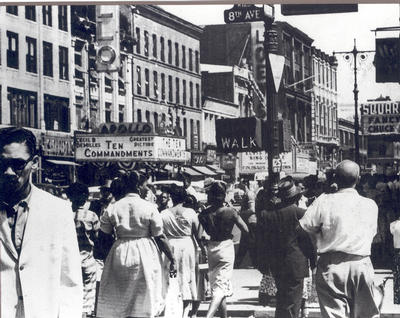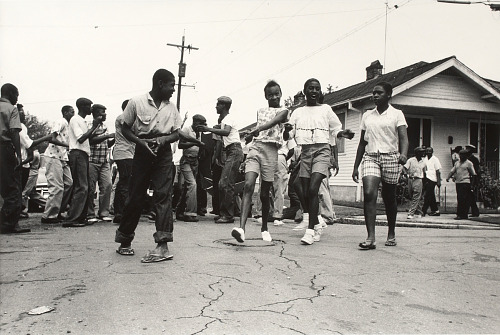According to the theory of social constructionism, “language” enacts power. Language reinforces roles and serves as a reminder of one’s standing within social relations. “Ghetto” is a classic example of language that reinforces and defines power relations; it defines behaviors, status, and space, especially African American space. Ghetto imposes identity, positioning, and expectations, and it often stigmatizes. In his book Ghetto: The Invention of a Place, The History of an Idea, author Mitchell Duneier points out that a distinguishing aspect of segregated Jewish ghettos in 19th-century Rome was that they were “established by administrative order from above rather than by social practices that led to voluntary separation”. This characteristic also differentiates African American neighborhoods from other ethnic enclaves in American cities. Ghettoization involves the imposition of state power to isolate and separate others. This power came in the form of redlining, racially restricted covenants, and threatened violence. This power is still carried in the term “Ghetto”. In the same way language enacts power, it also offers a medium to challenge existing power structures. Duneier argues that the degree of social control and the effectiveness of physical and economic isolation, compared to the level of autonomy and movement, distinguish a thriving ghetto from a deprived one. In American cities, the history of the Black Ghetto is the struggle between internal attempts to thrive and external means of control.

In America, the media, politicians and the elite, have cited the Black ghetto as the unequivocal evidence of black criminality, pathology, and inferiority. This narrative that dominated especially between 1960-1990’s, reinforced and justified more restrictive or racialized policies, including crime bills, urban renewal, and benign neglect. Yet, for all the restrictive, punitive and disinvesting policies and practices that facilitated poverty, substandard housing, crime and other social issues, the ghettos also became producers and creators of rich cultures, traditions, arts, democratic movements, and institutions.
Ghetto is the struggle between internal attempts to thrive and external means of control

Black communities developed first as towns or localities settled by free Blacks or freedom seekers searching for refuge and safe havens in the 18th and 19th centuries, including maroon communities. After the Civil War, there was local migration to Southern cities or seaport towns as well as distant migration to cities in the North and West during the Great Migration. However, in these new cities, Black migrants encountered discriminatory practices that fostered residential segregation and constrained opportunities. Black communities were formed by external forces but shaped by internal ingenuity and strength. To study and highlight the history of Black communities requires us to dissect, question, and reimagine previous understandings about them, including the “ghetto”. Reimagining the history of all Black communities means reflecting on the geography, people, institutions, structures, moments, networks, migration patterns, and even external policies that form a unique or distinct culture, story, and tradition. Black America represents a mosaic and interaction of different regions, localities, backgrounds, heritage, and their subsequent creations and contributions to America and the world. The Harlem Renaissance, Black Broadway in DC, Mardi Gras Indians, and hip-hop culture are a small fraction of the contributions, many emerging out of the labeled slums or ghettos.

Black America in itself is multicultural and diverse and the nucleus exists in Black communities and in the hood. As my study, scholarship and skills evolve, my purpose is to preserve the richness, stories, joy, sweat of theses African American communities and the Ghetto.
Embed from Getty ImagesSources
“What Is Social Constructionism? | Grounded Theory Review,” accessed May 13, 2024, https://groundedtheoryreview.com/2012/06/01/what-is-social-constructionism/.
Mitchell Duneier, Ghetto: The Invention of a Place, the History of an Idea, First paperback edition (New York: Farrar, Straus and Giroux, 2017).